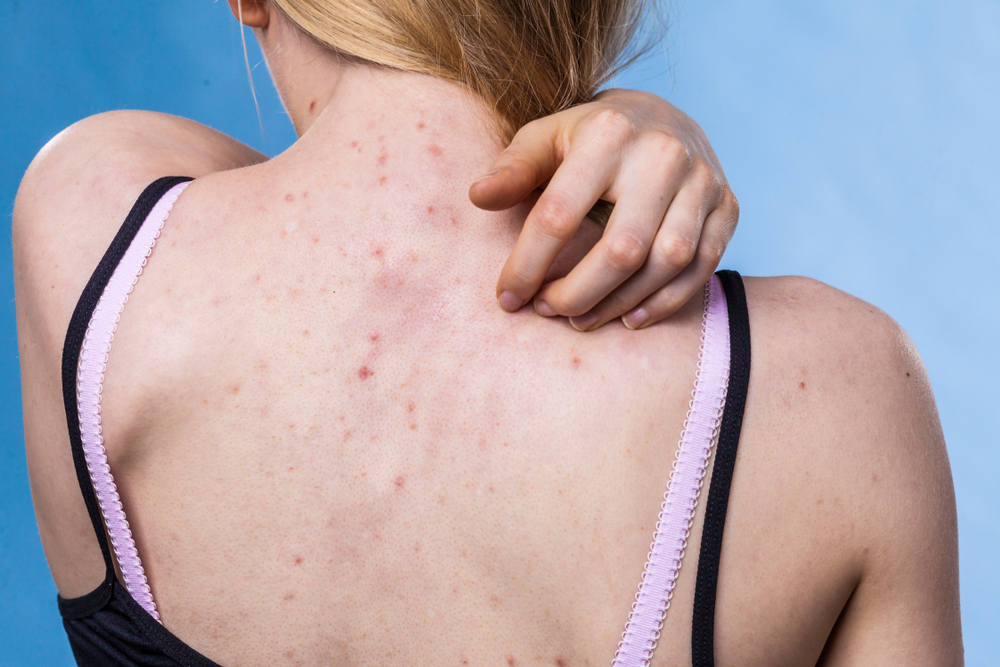Nasty pimples can be hidden under thick sweaters, but they are still annoying. We reveal the best tips against winter acne – for a nice back view.
Skin blemishes on shoulders and back are unpleasant all year round. But especially in the cold season, pimples and redness really blossom. Although the pustules can be hidden under dresses and thick woollen sweaters, it still becomes unpleasant if you choose to wear a backless party dress just now at Christmas or New Year’s Eve.
What are the causes of winter acne?
In the cold season not only the symptoms of acne patients get worse, but also people who are not normally prone to pimples now have to deal with skin impurities. The reason: the skin is severely strained by dry heating air and cold and cannot form an adequate protective coat. Pathogens can thus penetrate the skin more easily and worsen acne.
As in other parts of the body, pimples on the back are pores clogged and inflamed by sebum. However, there are more sebum glands in the back and shoulder area than in the face. As sebum production is even higher in adolescents, they are most often affected by symptoms in winter. But adults also often suffer from so-called late acne, which is usually caused by hormone fluctuations and a sudden drop in estrogen. This is caused, for example, when stopping the pill.
How can you prevent annoying pimples?
To prevent acne, it is advisable not to wear synthetic clothing, as the skin underneath can hardly breathe and starts sweating quickly. The sweat cannot evaporate and clogs the pores. The result is more pimples.
A weekly peel can also prevent winter acne. This loosens dead skin cells from the surface of the skin and prevents the pores from becoming clogged. Many doctors also recommend consuming cow’s milk in moderation. Due to the fact that the animals are raised using hormones, cow’s milk can promote the breakout of pimples.
What helps against back acne?
If the pimples are already there, it is advisable to have them treated professionally to avoid inflammation and the formation of scars. There are various treatment methods, depending on the severity of the acne:
- On the one hand, various dermatological ointments containing vitamin A or azelaic acid ensure that the pimples dry out when applied. These can be prescribed by a dermatologist.
- Another remedy for acne is the fruit acid peel that many dermatologists offer. It is a chemical tincture made from concentrated fruit acid that is applied to the skin. It inhibits the growth of acne-causing bacteria and virtually etches away (painlessly) the top layer of skin. Usually several sessions are necessary. Costs of around 170 USD can be expected per session.
- If there is a risk of permanent scarring, it may also be advisable to take medication. Dermatologists work with tablets containing vitamin A, which can target the cause via the bloodstream and dry out pimples from the inside. These tablets should only be taken in consultation with a doctor.
In certain cases it may even be necessary to take a light antibiotic that has an anti-inflammatory effect and fights acne from within. The antibiotic must also be prescribed by a specialist.

